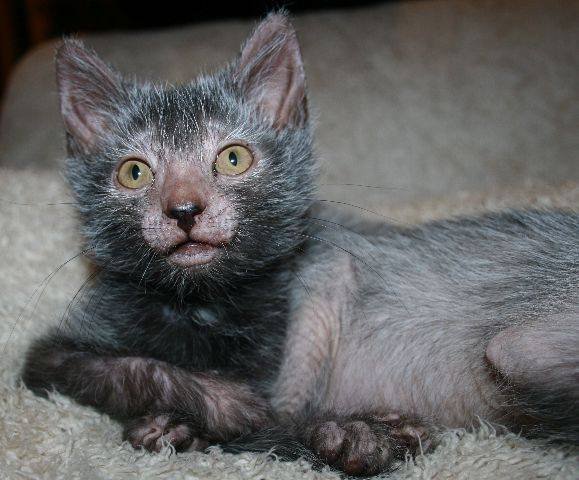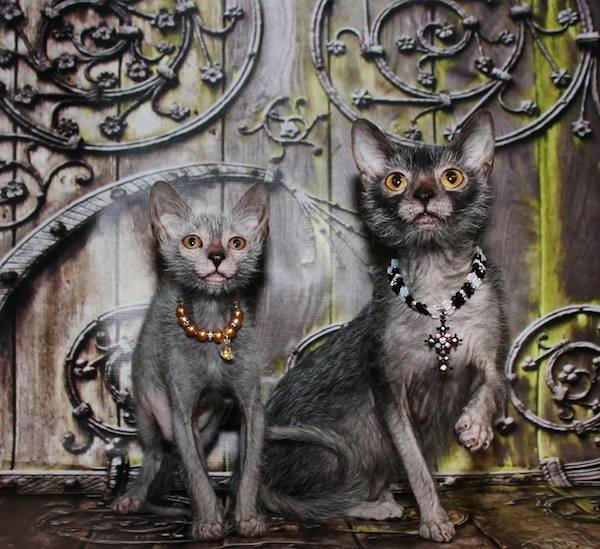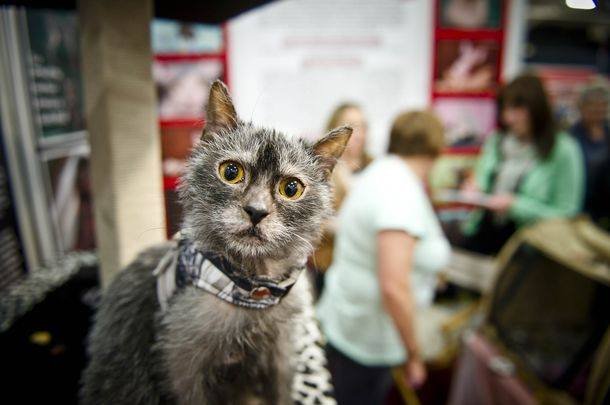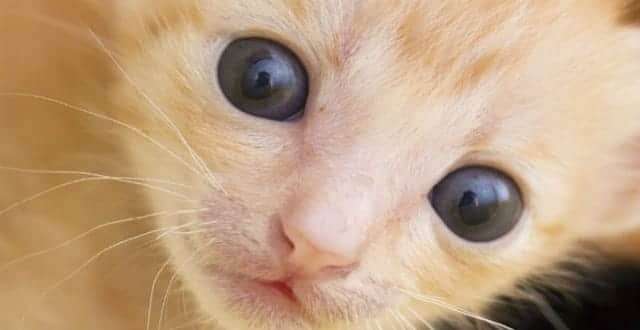SAN DIEGO, CALIFORNIA – At the Plant and Animal Genomes conference in California this week, the University of Missouri at Columbia’s Barbara Gandolfi offered an overview of approaches being used to determine the genetic basis of features found in the newest domestic shorthair cat breed being called the Lykoi or “wolf cat.”
Known for their sparse black and white coats that lend them a sort of werewolf-like look, Lykoi cats are believed to share a naturally occurring, hair type-related mutation that is inherited in an autosomal recessive manner, Gandolfi noted. Along with histological analyses of hair and hair follicle features in the skin biopsy samples from seven Lykoi cats and seven non-Lykoi domestic shorthair cats, she and her colleagues used a genome-wide association study approach to look for the precise nature of this mutation.
Alhough the researchers did not see alterations in the hair structure in the Lykoi cats they studied, they did indeed find that the patchy-haired felines tended to have significantly fewer hair follicles as well as fewer hairs sprouting from each follicle.
In an effort to untangle the genetics of the Lykoi cat, Gandolfi and her colleagues genotyped 20 Lykoi cats and a dozen domestic shorthair cats using the Illumina Infinium 63K Feline array.
Following their quality control steps and SNP frequency analyses in the Lykoi and other cats, the researchers were left with information at more than 40,000 SNPs. Based on patterns at these variants, they found that the Werewolf cats clustered near both Persian cats and Scottish wildcats.
In an effort to find genetic features associated with hair-related traits in the Lykoi, the team narrowed in on a chromosome B1 region with apparent ties to features found only in the cat breed. A closer look at this region revealed a shared haplotype block spanning more than a million bases of the cat genome, which appears to be within all of the Werewolf cats tested so far, Gandolfi noted.
She and her colleagues are now in the process of generating genome sequence data on Lykoi cat samples to verify findings from the GWAS association and get a better look at the genes and pathways underlying the Lykoi’s unusual hair patterning.
In addition to clues to the cat’s biology, the researchers suspect that these and other Lykoi cat studies could ultimately provide hints to related human conditions characterized by abnormal hair growth.
In a study published in Scientific Reports in 2013, for example, Gandolfi and colleagues from the University of California at Davis and the University of Veterinary Medicine in Vienna described a splice variant found in Selkirk Rex cats which have curly coats.
The variant fell in a keratin gene called KRT71 that had been implicated in prior studies of human hypotrichosis, among other hair-related human traits, supporting the notion that these cat studies can offer clues to human biology.
“[H]uman studies have not fully elucidate the molecular basis of hereditary hair disorders,” Gadolfi and co-authors wrote in that study. “The rexoid domestic cat breeds are a model that can reveal new loci involved in hair texture and hair shaft anomalies, as well as characterize the effect of different mutations within the same loci as found in humans and other species.”












